Tekonsha Prodigy P2 Trailer Brake Controller w/ Custom Harness - Up to 4 Axles - Proportional

 Arrives before Christmas
Arrives before Christmas 

with factory 4-Flat
with factory 7-Way
Will this fit?
To see if this custom-fit item will work for you please tell us what vehicle you'll use it with.
- All Info
- Reviews (2750)
- Q & A (0)
- Videos (6)
- Photos
Tekonsha Trailer Brake Controller - TK42UR
- Electric
- Electric over Hydraulic
- Proportional Controller
- Up to 4 Axles
- Tekonsha
- Under-Dash
- Plug-In
- Under-Dash Box
- Single Trailer Only
- LED Display
The Tekonsha P2 is a classic brake controller you know you can rely on. It's easy to install, and with the custom harness, it's plug-and-play.
Features:
- Proportional - Smooth, safe, and good for your brakes long-term
- Fast installation - Mount the bracket to the dash and then attach the unit to the bracket
- Plug-and-play - Custom harness included
- Simple controls - Thumbwheel for gain, button for boost, and manual override lever
- Easy-to-read screen - Large, simple, and dims automatically
- Safe - Built-in safeguards protect vehicle, trailer, and controller
- Quick disconnect - Easy to unplug and remove the controller when you don't need it
- Automatic leveling - Must be parallel with direction of travel and horizontally level
Specs:
- Application: trailers with up to 4 axles (8 brake assemblies)
- Compatible with electric or electric-over-hydraulic trailer brakes
- Dimensions: 5-1/8" long x 3-1/8" wide x 2" tall
- Mounting: 360 degrees vertically
- Warranty:
- Limited lifetime on brake controller
- Limited 1-year on wiring harness
Gain Adjustment
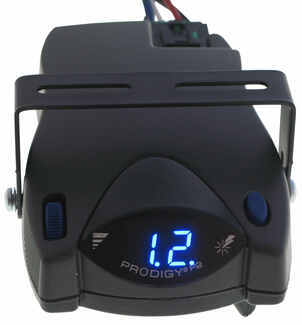
Gain is the maximum amount of power that will be applied to your trailer's brakes. How much braking output you need is determined by the weight of your trailer; a heavier trailer will need more power to bring it to a stop. You want to go as high as you can without the trailer brakes locking up.
You can adjust the gain by turning the thumbwheel on the front of the controller.
Power Boost for Heavy-Duty Towing
The boost setting controls the aggressiveness of your trailer's braking, meaning how quickly the brakes reach the maximum braking level. If your vehicle takes too long to come to a stop, increase the setting. If it stops too abruptly, decrease the setting.
Depending on the level of boost, your trailer brakes can start at either 13 percent or 25 percent of the set gain. So instead of starting at 0, the brakes will start at 25 percent and get to 100 percent sooner. This keeps the trailer from pushing your tow vehicle forward.
Boost Levels:
| Approximate Gross Trailer Weight | Boost Level | Increase in Initial Power Output |
|---|---|---|
| Less than tow vehicle GVW | B1 | 13% |
| Equal to tow vehicle GVW | B1 or B2 | 13% or 25% |
| Up to 25% more than tow vehicle GVW | B2 or B3* | 25% |
| Up to 40% more than tow vehicle GVW | B3* | 25% |
*Both B2 and B3 offer a 25-percent boost in initial power. But the braking curve for B3 is more aggressive than that of B2. This means that, even though you will start out with the same intensity when using these boost levels, you will get an overall more aggressive braking experience with the higher level. So if you use B3, you will reach maximum braking sooner than if you use B2.
Manual Override
To engage the manual override, twist the rotary-style lever from right to left. This will activate the trailer's brakes and brake lights independently of your vehicle, great for stopping sway or controlling your trailer's momentum in an emergency.
Safety Features
The Prodigy P2 offers key safety features to prevent damage to your towing setup:
- Integrated reverse battery protection shields the brake controller and your trailer's breakaway system from shorts.
- When the P2 is not in use, it draws only 3.6 milliamps to minimize the drain on your vehicle's battery.
- Any time your vehicle and trailer are at a standstill with the brakes applied for more than 5 seconds, the hold feature will kick on and reduce power to just 25 percent. This will keep your trailer in place without your brakes overheating.
The Prodigy P2 also runs continuous diagnostics to check for problems as they come up, including:
- Open ground
- Overload
- Output short
- Power loss
- No trailer connection
Installing the Tekonsha P2
Installing the P2 is incredibly simple. You'll mount the bracket to your dashboard then mount the unit to the bracket. Plug the custom harness into your vehicle and into the unit. Done!
Keep in mind that the P2 must be horizontally level and parallel with the direction of travel to work correctly.
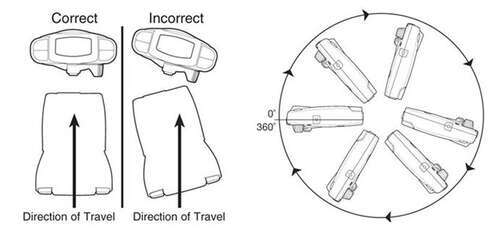
With a replacement wiring harness (sold separately) and replacement bracket (P7685 - sold separately), you can even transfer the Prodigy P2 to another vehicle.
Note: If you don't already have a 7-way plug at the back of your vehicle, take a look at our exclusive 7- and 4-way brake controller installation kit (ETBC7 - sold separately).
What is Proportional Braking?
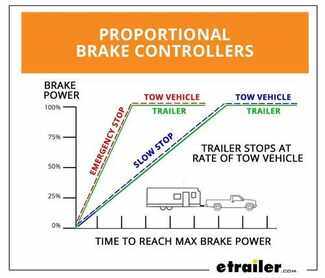
Proportional braking means that your trailer brakes mimic your tow vehicle's brakes. If you slam on the brakes, your trailer brakes will activate with the same intensity; if you brake lightly, your trailer brakes lightly too. The trailer's braking is in proportion to your vehicle's braking. This saves wear and tear on the tires and the brakes on both your vehicle and trailer.
The Prodigy P2 uses an internal inertia sensor to detect how your vehicle is braking so it can send the right amount of braking power to your trailer. It measures the inertia of your tow vehicle and activates the trailer's brakes to slow at the same rate. The result is uniform braking across your towing setup. No push-pull action - just smooth, proportional braking every time.
90885 Tekonsha Prodigy P-2 Proportional Brake Controller - 1 to 4 Axles
Replaces Tekonsha 90185
303500 Tekonsha Brake Control Wiring Adapter with 2 Plugs
Replaces Tekonsha 3035 and Tow Ready 20260
Installation DetailsCalifornia residents: click here

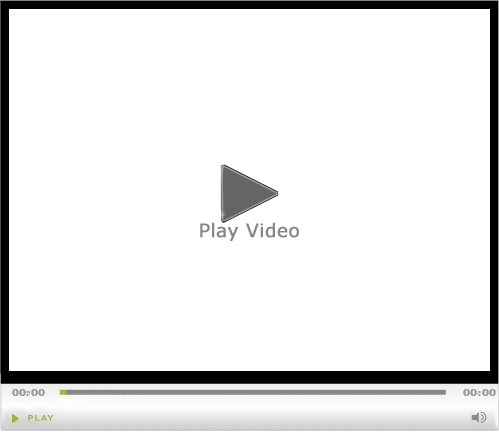
Videos are provided as a guide only. Refer to manufacturer installation instructions and specs for complete information.
Video Transcript for Installation: Tekonsha Plug-In Wiring Adapter for Electric Brake Controllers on a 2013 Ford Explorer
Speaker 1: Today on our 2013 Ford Explorer, we're gonna be taking a look at and showing you how to install the Takonsha Prodigy P3 trailer brake controller, part number 90195. We'll also be using universal installation kit for trailer brake controllers, part number ETBC7.This is what our brake controller looks like when it's installed. This is gonna be a proportional brake controller. This is gonna allow you to adjust your brakes on your trailer. This is gonna be your gain. It goes up to 14, down to zero.
This is gonna allow you to set your braking power on your trailer to the exact amount of pressure that you want, per the load that you're carrying. This is gonna be your menu button. This is gonna allow you to set your display, your brightness, contrast. This is your boost level. You have three levels, and you have your override button.
The override button is gonna allow you to apply the brakes to your trailer only without applying the brakes to your vehicle. The proportional side of this brake controller, what that means is your brakes on your trailer are matching the brake pressure in your vehicle. When you apply the brakes in your vehicle, the brakes in your trailer are being applied, and that pressure is being matched.Now, what's good about this brake controller is inside the menu, you have the option to store several different trailers. So, you have different size trailers, different weights, you have that option to set it so you can just go back in, set it on whatever trailer you're pulling, and this is automatically adjusted to it.First thing we're gonna do to start our installation is you're gonna have your seven and four pole wiring, we're gonna take our bracket that comes with it and we're gonna mount it on to our seven pole first. You're gonna put a screw in each corner.
We're gonna start with one side, and you're gonna have a nut with a star washer, put it on the backside. I'll do that with these two corners. Go ahead and take a flathead screwdriver. You want to make sure you don't tighten them too tight. You don't want to crack this plastic housing.We'll mount our seven pole on our bracket.
Now, this bracket doesn't come with your kit, but you can find one on our website, part number 18140. In our kit, you're gonna get some small screws, small washers, because this is so close to the bumper, we're gonna take the screw and go up from the bottom and put one screw in here. We can use a flathead or a Phillips screwdriver. Go ahead and tighten our screws up.Next we're gonna take our duplex wire. You want to split it right down the center. I'm gonna trip my black wire. I'm going to add a heat shrink butt connector. These don't come in the kit, but you can find them on our website. I'm gonna take this black wire and the butt connector that's on here, I'm gonna cut it off. I'm gonna strip this black wire. Then we're gonna add the other end of the heat shrink butt connector onto our wire coming from our plug. The purpose of this is this is gonna be outside the vehicle, and it's gonna help protect this connection and keep it from corroding.Then we'll just take a heat gun, shrink up our butt connector.So, next we're gonna mount our ground wire. Self-tapping screw that comes in your kit, you want to make sure you mount it to metal surface, not to any plastic.Next thing we're gonna do is we're gonna cut off our dust cap on our four pole. This four flat was already on the vehicle, so we have two options. You can take the four flat that was already on the vehicle, the four flat that's on the ETBT7, and you can connect them together, or you can cut both ends off and hard wire this together.First what I want to do is I want to take some dialectical grease and put it inside on my connections. We'll plug them together. I'll take a zip tie and run it through around both of them. Cut off our excess.Next what we want to do is we want to take that butt connector on our blue wire, we're gonna cut it off, and we're gonna connect this one the same way we did our black wire, only this is gonna go to our white wire in our duplex. Once you have your blue wire connected, we're not gonna be using the purple wire. We're gonna bunch all this together, put some wire loom on it.Once you've got all your wires cleaned up and attached your hitch back here, next thing we're gonna do is we're gonna run this to the front of the vehicle. You can do it any way you want. You just want to make sure you stay away from any heat sources or any moving parts.So, from back here where I attach it to the back of the hitch, what I'm gonna do is I'm gonna go up and over. We're gonna go over the hitch on the exhaust pipe right above here, back behind our panel. So, I ran over top of my hitch to stay away from my exhaust and you can see right here it went through the hitch, around this existing piping, just kind of looped it around, went over the top here, came down, zip tie here, ran it right underneath, couple zip ties along the way, back onto this existing piping, and you can see here I just wrapped it around to the front. I ran a zip tie around the loom here, and you can see I ran an airline tube down from my battery. So, then our white wire's gonna have to go to our brake connector which is inside on the driver's compartment, black wire's gonna be ran up top to the battery.So, what we need to do is we need to split the duplex off and you can see here I've taped my black power wire that's gonna be going up and connecting to my battery, I've taped it to my airline tube. Now when I'm ready, I'll go up top, pull my airline tube, and it'll bring my black wire up to me.So, now we'll put our airline tube up with our black wire connected. Now to mount this, what I'm gonna have to do is I'm gonna cut a little bit of piece of this rubber here so this is sit flat against there.Now we'll take our self-tightening screw and attach our circuit breaker. Once we have our circuit breaker mounted, then we'll take our black wire from underneath the vehicle and we're gonna cut it to size. It's gonna be going on the auxiliary side, which is the silver side, our silver post, and strip it. We're gonna add a small ring terminal, crimp it down. Place the nut. We just want to snug that up.Once you have this connected, you need to make a jumper wire that's gonna go from this copper colored terminal to the positive side of the battery. We're gonna strip both ends of our black wire. We're gonna add the large ring terminal on one side and the small ring terminal on the other.We'll take a 10 millimeter, we're gonna take this nut off right here on top on our positive side of our battery. I'm gonna run my power wire and replace the nut. Now inside the driver's side, what we're gonna do is we're gonna pull up this kick panel and if you have lights, you want to make sure that you don't pull on it. You're gonna have a wire that runs there. All we need to do is just set this out of the way enough to get underneath the carpet, and we're gonna have a plastic fastener right here. I'll just take a trim panel tool, we'll pull that out like that. This pad off, pull back our carpet, and we want to get to this ground right here. So, what I'm gonna do is I found if you push on it, this wire runs down and then drops down under the vehicle, so if you take your finger and you push right about here, it gets really soft. So, that means I don't have this wire running all the way to the back.So, I'm gonna just gonna make a small slice on here. So, I'm gonna take a piece of airline tube, you can use wire if you had some, we're gonna try and push it through there. I'm gonna actually take this and push it into the airline tube just like that. Now we'll just take a little bit of lock tite silicone. Just want to kind of cover this hole a little bit. Now what I'm gonna do is I'm gonna take my wire and start pulling my carpet back down. I'm gonna make sure my wire's hanging out the top. Once you have that line ran, and you start putting your carpet and your panels back in place.So, now if we come inside the vehicle, driver's side underneath the dash, and our plug we're looking for is gonna be up underneath right behind our hood release. In order to get that, we need to remove this panel. You're gonna have two screws here. We're gonna take a seven millimeter socket and pull those out. Pull that panel off first. So, on this side towards the door, there's a plastic ring on top of this panel that's holding onto the screw or holding the panel onto the screw. You just want to reach up and pull down like that. On the center part of the vehicle, this lip right here is gonna be tucked up underneath the dash.Next, we need to locate the plug. Since we have a factory tow package, that's gonna be the plug we're looking for.So, now with our brake connector to make it an easier installation, having the factory tow package, we're gonna be using part number 3035. If you see this blue wire that's running through here, the white wire that we just ran inside, we're gonna have to connect it into that blue wire. This part is gonna connect into our plug right underneath, right behind our release button for our hood.So, what I'm going to do is I want to tie this in as soon to this plug as possible, but not so close that it's hard to work with. So, I'm gonna pull back this tape and I'm gonna do it right in this area. So, now I'll just slide this sleeve off and I'm gonna cut my wire right in here. I'll cut our wire. We're going to splice both ends, and we're gonna add a butt connector, and we're gonna take our white wire and cut it, and strip it, and we're gonna tie to the other end of our wire like this. Then we'll crimp our wire there, take the other end of our blue wire, crimp it down, and then we'll heat shrink that to hold our wires together.Once you have that done, go ahead and plug the brown side into our wire under our dash, and we can take this, cut it across, go ahead and put our bottom panel back in place. What we want to do is we're gonna go up over the top of this center section of the vehicle first. Kind of route this over like this.Next we can put our panel back in place. We're gonna start the bottom ones, we'll get those in first. We'll set our top ones in place, and we'll start slowly just pushing back in place like that.So, we need to find a good place to mount our brake connector. We don't want to go too low because then your shins hit it. You go too high, their knees are gonna hit it. I like to go in between top and bottom. So, about right there.So, I'm gonna take one of my self-tapping screws and go about center on the panel, and we'll take another one of our screws and go in through the side. Then we'll have one more that's gonna go on this side. It's easier to take this panel off, put it in place, and then we can put our panel back in place.So, now we'll plug our wire into the back of our brake connector, and you can see we have power. Now we can put our brake connector into our bracket, and then we'll just hide the rest of our wire here. Just kind of tuck it in back behind the dash.Once we're satisfied here, we got our wire tucked in where we need, go ahead and reinstall our screws in our panel.Now with an alternate power source, we'll test our lighting. Left blinker, right blinker, running lights, and brakes. It's gonna show that we're getting power from our brake connector to activate our brakes on our trailer, and that'll do it for a look at and installation on Takonsha Prodigy P3 trailer brake connector and ETBT7 on our 2013 Ford Explorer.
Customer Satisfaction Score:
97% were satisfied with this product
3% of customers were not satisfied
- Product did not meet expectations
Ratings & Reviews
4.9
2749 reviews
See what our Experts say about this Tekonsha Trailer Brake Controller
- What is the Difference Between the Tekonsha Prodigy P2 and the P3 Brake ControllersActually, the P3 now has the upgraded axis accelerometer like the P2. The Tekonsha P3 Trailer Brake Controller # 90195, will work with both electric over hydraulic brakes on the trailer as well as electric brakes. It has a menu option on the display that allows the user to switch between the two systems. I have included a link to the installation details for the P3. The P2, # 90885, will also work with both electric brakes and electric over hydraulic brake systems but the mode is selected...
view full answer... - Electric Over Hydraulic Brakes Don't Work w/Brake Pedal on Newer GM Trucks w/OEM Brake ControllerLike you said, many factory integrated brake controllers will not work well with electric over hydraulic trailer braking systems. Some of the newer versions of these controllers now have an electric over hydraulic mode. Check to see if any of your trucks have this mode and, if they do, if the braking starts working with the pedal. Otherwise there are a couple of solutions to solve this issue. First, there may be an adapter that will allow the factory controllers to work but it depends...
view full answer... - Can Brakes be Added to 3,500 Pound Dexter Trailer AxleYes, brakes can be added to your trailer and I've linked an article to help with the parts you'll need. The first thing you'll need is the brake mounting flanges welded to the axle, like you mentioned. The correct flange is # 4-35 however these need to be welded by a qualified welder because the mounting flange must be welded square and concentric. This is generally done using a jig at a trailer shop. I've linked our selection of hub and drum assemblies for 3,500 pound axles. You'll...
view full answer... - Are Electric Trailer Brakes Okay to Use on a Boat TrailerHydraulic brakes are better suited for boat trailers for the simple fact that wires and water do not like to cooperate with each other, but the etrailer.com Self Adjusting Electric Trailer Brakes, # AKEBRK-35L-SA, can be used on a boat trailer assuming there is a 4-bolt brake mounting flange welded to the axle. The compatible right hand brake assembly is part # AKEBRK-35R-SA. If you choose to install electric brakes on your boat trailer, there are a few things that you should keep in mind....
view full answer... - Brake Controller Installation In 2020 Chrysler PacificaGreat question Mark! There is a brake controller plug and play wiring adapter for the 2020 Chrysler Pacifica to plug into the tow package with part # TK93VR. Tekonsha is currently the only manufacturer that has one available that we are aware of. This will plug into the built-in port under the dash of the Pacifica for an easy installation. For the brake controller I recommend the Tekonsha Prodigy P2 Trailer Brake Controller part # 90885. The P2 is one of our most popular brake controller...
view full answer... - Parts Needed to Install Brake Controller in 2014 Honda PilotHey Mike, the 7-way kit part # 118265 does fit your 2014 Honda Pilot to provide it with a functional 7-way but it does not come with the brake controller install port you'd need for a brake controller. So you can hardwire in a brake controller or have a Honda dealer install one for you so that you could use a # 3070-P to install a brake controller like the P2 part # 90885. If you'd prefer to hardwire let me know and I'll walk you through that process as well.
view full answer... - Should Blue Wire From Brake Controller Have Constant PowerThe blue wire coming from the back of your Tekonsha Voyager Brake Controller # 39510 is for brake output to the 7-Way connector. This wire should only have power with the brake pedal depressed or the manual override activated on the brake controller. If you are getting constant power on this blue wire this may be an indication that the controller is bad but there is an easy way to test this. You will want to first sever the blue wire several inches from the back of the controller. Then...
view full answer... - Fuse Box Instructions for Installing a Brake Controller on a 2003 Chevy SilveradoWhether your 2003 Chevrolet Silverado came with a factory 7-Way or not, the wiring for both the brake controller and the 12V power pin on a 7-Way is already run. If you check out the video I attached of the Prodigy P2 # 90885 being installed on a similar 2003 Silverado you can see what needs to be done with the wiring under the fuse box at the 3:20 mark. You will just need to connect the Blue wires together and you will be good to go since you already took care of the Red wires. The P2...
view full answer... - Testing for Proper Voltage on the Brake Output CircuitThere are many things that can affect the voltage on the brake output wire from your brake controller to your trailer brakes such as the power setting on your brake controller, how you are testing the wire and if you are testing it with the brakes or manual override activated. Using a multimeter to test the voltage on the brake output wire at your trailer connector will not always give the proper reading because it does not provide a load on the circuit like brake magnets from a trailer...
view full answer... - Brake Controller Recommendation for a Truck with Air Brakes and a Trailer with Electric BrakesThe trailer brakes work on a separate circuit than the lights. You have a couple of options to control the electric brakes on the trailer. One option is to use an air over electric brake control, # HA100400C. This unit connects to the air brakes on the truck and when the brakes are applied it sends an electric signal back to the trailer brakes. The other option, and what I would do, is to use an electric brake controller like # 90885. For either of these controllers, the red wire attaches...
view full answer... - Brake Controller Has Constant 12V Power But Trailer Brakes Do Not EngageFirst I suggest you double check your wiring from the controller. Typical brake controller wiring is: Red wire goes to the brake switch cold terminal, which gets power only when the pedal is pressed; Blue wire connects to the trailer brake circuit; White wire is ground; Black wire connects to the 12V power source. Please note that we do offer vehicle-specific wiring harnesses that plug into the OEM socket under your dash and provide bare wires on the other end to wire directly to your controller....
view full answer... - Brake Controller Wiring for Ford E-450 MotorhomeIf your vehicle has a factory brake controller plug, you can simply use the Tekonsha Plug-In Wiring Adapter for Electric Brake Controllers – Ford, Item # 3034-P, which will connect to the vehicle plug and the brake controller. On the new E-450 vehicles, the plug is located behind the storage compartment above the radio. Once you remove the storage compartment, you can plug in the adapter and run the cord behind your dash to the brake controller. I've attached several images showing where...
view full answer... - Recommended Brake Controller And Plug-In Harness For 2021 Suburban Z71 With Tow PackageFor your 2021 Chevy Suburban, I recommend going with the Tekonsha Prodigy P2 Trailer Brake Controller - 1 to 4 Axles - Proportional # 90885. This is an easy to use controller that works very well with trailers that have electric brakes like yours. I use this exact one on my vehicle and I love it. You will also need Tekonsha Plug-In Adapter # 3016 which allows you to connect the brake controller to your factory tow package plug. I attached some demonstration videos to help.
view full answer... - What Trailer Wiring is Needed for 2024 Subaru Outback WagonHey Ryan, so I looked up the Aliner LXE and it doesn't look like a trailer that would have brakes so most likely all you need is a 4-way confirmed as a fit for your 2024 Subaru Outback XT like the Tekonsha part # 118467 which installs pretty easily. 4-way trailer wiring basically controls all of the taillight functions on a trailer but nothing else If instead the trailer DOES have brakes you would need to convert the 4-way to a 7-way with the part # ETBC7 so that you can install a brake...
view full answer... - Towing a Trailer with Electric Brakes with a Semi Tractor with Air BrakesTo tow your trailer that uses an RV style 7-way blade style connector with your semi that has a 7-pin connector, you need to construct an adapter that will also combine the brake signal into the right and left directional signal pins. This can be done by using a female 7-pin socket # PK11720 to accept the plug from the semi, a tail light converter # 119178 and a female 7-way RV blade-style socket # PK12-707E. The converter would be wired in between both sockets to combine the brake light...
view full answer... - Troubleshooting Tekonsha Prodigy P2 Brake Controller that Doesnt Recognize TrailerIt's possible the brake controller is bad, but you definitely want to check some other things before you purchase a replacement. The first thing to do is inspect both the truck's and the trailer's connectors to make sure the pins are clean and free of debris. On the trailer connector at the rear of your 2004 Chevrolet Silverado test the pin at the 5 O'clock position with a circuit test like # PTW2993. You'll need someone to engage the manual lever on your P2 for this. If this checks...
view full answer... - Tekonsha Prodigy P2 Trailer Brake Controller Showing OL, PL and SH Error CodesFirst, lets start by resetting the Prodigy P2. With the trailer disconnected from the vehicle, disconnect the brake controller by unplugging the harness from the rear of the unit, and plug it back in. The display will show NC for 15 seconds, and then show two dots. The OL error code indicates that the Prodigy is drawing too much current. This is usually caused by a short on the brake output wire on the trailer or low resistance to ground on the brake wire. Look for any pinch points, or...
view full answer... - How Does a Brake Controller Know when a Trailer is ConnectedWhen a trailer with electric brakes is connected to a vehicle that has a brake controller that brake controller is sensing the draw of the brake magnets by sending back a small amount of voltage on the blue wire. The brake controller also get's signals from the tow vehicle to let it know when you are stepping on the brake pedal. On most vehicles this connection is made either at the brake switch above the brake pedal or through some kind of tow package wiring. I have included a link...
view full answer... - Is There a Brake Controller Wiring Adapter for a 2022 Volkswagen AtlasThank you so much for the photos and all of the info! Currently none of our manufacturers have an adapter that they have tested and approved to work with that connector you found on your 2022 Volkswagen Atlas, so you'll have to cut off that connector on your vehicle and use the included pigtail to spliced in the Prodigy P2 # 90885 in your vehicle. You will need to connect the following wires from the pigtail to the corresponding functions on your Atlas: Blue - 7-Way Output to Trailer Black...
view full answer... - How do I Tell if the Brake Controller is BadYou are correct, you should only be getting output when the brake is applied, or the override switch is activated. It sounds like the controller might be bad, but to make sure, you should probably bench test it before tossing it. Use a circuit tester, and check the red wire that exits the rear of the controller. This wire should only go hot when the brake pedal is pressed. If this checks out ok, then the controller is bad and must be replaced. We have a video that shows how to bench...
view full answer... - How Does Brake Controller Install in 2017 GMC Canyon For installing a brake controller in your 2017 GMC Canyon there is no plug present under the dash, but the needed wires are already run. You will connect the brake controller wiring with the vehicle wiring already present under the dash. It's up above the brake pedal. If you check out the attached video link you can see the Prodigy P2 part # 90885 installed in a similar GMC Canyon and you can see exactly where the wiring is and the entire install process.
view full answer... - Installing a Brake Controller on a 2000 Chevy SilveradoThere are some connections under the hood that will need to be made to complete the installation of the Tekonsha P2 Brake Controller # 90885 with Wiring Harness, # 3025-P. Once you have plugged in the # 3025-P harness into the port to the left of the brake pedal, you can make the connections under the hood. Locate the power distribution box. There will be a bracket on the driver side near the windshield that will need to be removed. Remove the bracket and power distribution box cover....
view full answer... - Brake Controller Installed in 2021 Chevy Silverado Z71 Trail Boss Not Powering UpAssuming that you've found the correct connector for the # 3064-P brake control harness which is located under the dash to the left of the steering column, I'd wager than you have a fuse missing in the power distribution box in the engine compartment on the passenger side. Check fuse location # 84, and make sure that there's a fuse installed there. If the fuse is missing or blown, you can obtain a replacement from your local auto parts store.
view full answer... - Where is Brake Controller Install Harness for 2017 Jeep CherokeeThe connector to install an electric brake controller in your 2015 Jeep Cherokee is located behind a panel that is to the left of the steering column. They're often tucked up fairly far under the dash. The connector will mate with the adapter # 3014-P that I've attached picture of. For a brake controller I would recommend the Prodigy P2 Brake Controller part # 90885. This is our best selling brake controller because of how well it works and how easy it is to setup. This is a proportional...
view full answer... - Which Brake Controller Install Harness Fits 2022 Ford E-450 CutawayFor your 2022 Ford E-450 cutaway chassis the correct Tekonsha brake controller install harness is actually the part # 22292. This is why what you have doesn't look like it would work with the 3035-P.
view full answer... - Below Bed 5th Wheel Installation Kit Needed For A 2000 Ford F-250 Hey Judah, For below bed you would need to go with the B&W Turnoverball Underbed Gooseneck Trailer Hitch # BWGNRK1108 and then use either the fixed base Companion # BWRVK3500 or slider base Companion # BWRVK3400-5W depending on whether you have a long bed or short bed. If your bed is less than 8' then you'll want to go with the slider base to gain some additional turning clearance when making tight turns. This setup would also allow you to tow gooseneck trailers but removing the hitch...
view full answer... - Recommended 7-Way Trailer Wiring On 2007 Ford E-350 Super Duty VanIf you don't already have a 4-way wiring harness, we need to start there to get your 7-way. For a 4-way, I recommend the Curt T-Connector Vehicle Wiring Harness with 4-Pole Flat Trailer Connector # C56020 which plugs in behind the tail lights of your 2007 E350. You will have to remove the tail light assemblies and interior trim paneling to access the factory connections. I've attached a video to help. Then you will use the Universal Installation Kit for Trailer Brake Controller - 7-Way...
view full answer... - Brake Controller Wiring for Ford E-450 MotorhomeIf your vehicle has a factory brake controller plug, you can simply use the Tekonsha Plug-In Wiring Adapter for Electric Brake Controllers – Ford, Item # 3034-P, which will connect to the vehicle plug and the brake controller. On the new E-450 vehicles, the plug is located behind the storage compartment above the radio. Once you remove the storage compartment, you can plug in the adapter and run the cord behind your dash to the brake controller. I've attached several images showing where...
view full answer... - Is Reese Voyager and Tekonsha Voyager the Same Brake ControllerThey are the same controller as Reese and Tekonsha are made by the same company. The Tekonsha part # 39510 does not come with the vehicle specific install harness part # 3035-P which is custom fit for your 2003 Ford F-250/350.
view full answer... - Tekonsha Voyager Brake Controller Not Activating Trailer Brakes When Brake Pedal Is PressedYes, we can help you test your brake controller and determine if the controller is bad or if there is a wiring issue that is causing the problem on your 2003 Ford F-250 pickup. Lets start with the easiest things first. Be sure that when you are testing the trailer brakes with the brake pedal that the vehicle is moving. The trailer brakes will not apply with the brake pedal if the vehicle is not moving because of the proportional sensor. The first thing I would check is the red wire that...
view full answer... - Where is Brake Controller Install Port for 2018 Ford ExplorerTo install your Reese Pod brake controller in your 2018 Ford Explorer will require the install harness part # 3035-P which is a confirmed fit. If you check out the 9:55 mark of the install video I attached to this page you'll see where to find the port on your vehicle to plug the controller in. It is a bit hidden under the dash underneath the panels.
view full answer... - Parts Needed To Install a 7-Way and Trailer Brake Controller On a 1996 Ford F-350 With Factory 4-WaySince you already have a factory 4-way flat on your 1996 Ford F-350 you will need the Adapter 4-Pole to 7-Pole # 37185. This will plug into your factory 4-way and the rest of the wiring will have to be spliced into your factory wiring as I do not see anyone makes wiring for your factory connectors. The Tekonsha Plug-In Wiring Adapter # 3035-P will allow you to plug into the 6 pin connector you found under the dash. Then you can connect the Tekonsha Prodigy P3 Trailer Brake Controller # 90195.
view full answer... - Installing A Reese Brakeman Controller In A 202 Ford E250 With Factory 4-FlatHey John, I can definitely help with that. The Reese brakeman controllers are compatible with the Tekonsha brand plug-and-play adapters. For your 2002 Ford E250 you can use the # 3035-P to plug directly in to the factory brake controller plug. You will also need item # 37185 to complete your wiring. The brake (blue) wire will need to be run from the brake controller back to the plug in the rear. The brake controller power and brake pedal wires are already run. A 12 volt hot lead from the...
view full answer... - Brake Controller Recommendation for a 2008 Ford F-150 with Factory 4-WayTo install a brake controller in your 2008 Ford F-150 you would be able to use the brake controller port under the dash and you will need to complete the wiring at the rear of your vehicle to the 7-way at the rear of the truck. For a brake controller I would recommend the Prodigy P2 Brake Controller part # 90885. This is our best selling brake controller because of how well it works and how easy it is to setup. This is a proportional brake controller that senses the amount of braking the...
view full answer... - Brake Controller Connector Location on a 2020 Ford ExplorerIf your 2020 Explorer is equipped with the factory 7-way trailer connector, it will have the brake controller connector under the dash. The connector is located under the dash, above and to the right of where the driver's right knee would be. The connector will be rectangular, and will be gray in color. If you use a Tekonsha brake controller like the Tekonsha Primus, part # TK90160, the # 3035-P wiring adapter is the correct harness. If the vehicle doesn't have the factory 7-way, the connector...
view full answer... - Recommended Wiring for 1998 Ford F-150 to Add 7-Way to Factory 4-Way Trailer ConnectionFor your 1998 Ford F-150 Extended Cab with factory 4-way flat, you need the Tekonsha Ford Replacement OEM Tow Package Wiring Harness, 7-Way # 118242. This will give you the two additional relays needed as well as the wiring harness. Then you will need a brake controller. I recommend the Tekonsha Prodigy P3 # 90195 as well as the wiring adapter # 3035-P. This will give you an easy to use proportional brake controller with easy to use presets as well as a nice LCD screen for diagnostics....
view full answer... - Factory Brake Controller Harness Location on a 2013 Ford ExplorerThe harness for the 2013 Ford Explorer is located above and behind the hood release lever. There will be a 6-pin connector that mates with the one on the adapter at the end of the harness # 3035-P. For a brake controller i recommend the Tekonsha P2, # 90885, because it is one of our best selling controllers for its ease of use. I have included a link to the installation details for you to view.
view full answer... - Brake Controller Wiring Harness Location on a 2013 Ford Explorer LimitedOn your 2013 Ford Explorer Limited, the factory brake control wiring harness should be located above and behind the hood release under the dash on the drivers side. To connect your P2 brake controller to the harness, you will need the Tekonsha Plug-In Wiring Adapter, # 3035-P. This adapter has one end that plugs into your P2 brake controller and a larger end that plugs into the 6 pin connector that should be located behind the glove box on the vehicles brake control harness. I have attached...
view full answer... - Recommended Brake Controller for a 2018 Thor Ace MotorhomeFor your 2018 Thor Ace Motorhome, I recommend using the Curt Spectrum Trailer Brake Controller part # C51170. The reason for this is because this unit is composed of two main parts, the control box and the output knob. The control box gets mounted out of site and then the output knob will get installed up on your dash for easy use and a very aesthetically pleasing look. The color output of the knob also helps with ease of use. Since your motorhome is on a Ford F-53 chassis, you can use...
view full answer... - How Would EZ Connector Magnetic 7-Way Trailer Connectors with Built-in Seal # 319-R7-02 InstallIf your 1994 Ford F-150 has a 7-way installed on it already the EZ Connector Magnetic 7-Way Trailer Connectors with Built-in Seal # 319-R7-02 will easily plug in line with it once you remove the 7-way from your truck's wiring and then plug this in place. Then on the trailer side you have to remove your current 7-way and then wire the trailer side connector in it's place.
view full answer... - Recommended Brake Controller and Wiring Harness For 2005 Holiday Rambler Ambassador on F53 ChassisFor your 2005 Holiday Rambler Ambassador motorhome, I recommend you use the Tekonsha Prodigy P3 Brake Controller # 90195. This controller utilizes a LCD screen that gives you easy to read and understand diagnostics and comes with simple presets to make set-up easy. It is proportional, so it will allow you to apply the trailer brakes at the same time and with the same amount of pressure so your trailer doesn't end up pushing or pulling your RV. It doesn't have the codes of most brake...
view full answer... - Recommended Plug in Brake Controller Adapter for a 2016 Range Rover TD6Hey Patrick! I would love to give you a quick yes but the best I can do is maybe and then show you what you need to look for. There is conflicting information on Tekonsha's website that says your 2016 Range Rover TD6 has the brake controller adapter port but I can tell you exactly where to look to find it. I linked a diagram below that shows the wiring on your Range Rover. This will be at the base of the left side a-pillar or to the left of your left foot right before your driver's side...
view full answer... - Why Is the Tekonsha Prodigy P2 Blowing a Fuse in My 2006 Ford Van when I Plug it in?Hello Bry, I am sorry the Prodigy P2 keeps popping a fuse, let's see if we can get you in good working order. You're dealing with a fuse that keeps blowing whenever you plug in your Tekonsha Prodigy P2 brake controller # 90885 in your 2006 Ford van (that was the vehicle in the fitguide). This usually points to a short somewhere in the wiring, most often with the black wire that supplies 12V power to the controller. If that wire is pinched or the insulation is damaged especially where...
view full answer... - 2001 Ford F-150 Trailer Hitch Needed with a 700 lbs Tongue Weight and Fits with Spare TireThe Draw-Tite Trailer Hitch Receiver # 37130 is a Class IV trailer hitch with a 2" receiver opening that is confirmed to fit your 2001 Ford F-150 and will allow you to keep your full spare in it's current location. This has a 7,000 lbs Gross Towing Weight (GTW) rating and a 700 lbs Tongue Weight (TW) rating. When used in conjunction with a Weight Distribution (WD) system those ratings are bumped up to 12,000 lbs GTW and 1,200 lbs TW. I have attached the installation details for you to...
view full answer... - What Vehicle Specific Pigtail do I Need for My Tekonsha P3 for My 2001 Ford F-350, Mounting Bracket?Hello Kip, Nice choice on brake controller, definitely my go to! For your 2001 Ford F-350 you will want the Tekonsha Plug-In Wiring Adapter for Electric Brake Controllers - Ford, Lincoln, Mercury # 3035-P. For the bracket it comes in 2 pieces, the part that attaches the brake controller # 2178, and for the bracket that mounts to the vehicle # TK5906. Getting a second truck all set-up for easy swapping?
view full answer... - Wiring Needed to Install 7-Way and Brake Controller on 2005 Ford E-350There is no reason you couldn't use the Universal Wiring Kit # ETBC7 that you referenced to install a fully functional 7-Way on your 2005 Ford E-350, but you may not need the entire kit depending on what the van is already equipped with. If the E-350 has the factory 4-Way installed at the rear, then the blue (brake output) wire is not already run like you mentioned. If you have the factory 4-Way though, the brake controller power supply along with the brake pedal wires ARE already run,...
view full answer... - Brake Controller With Plug and Play Wiring Harness for 1999 Ford F-250Hi Tom; we do have a custom wiring harness if you want to install the Tekonsha BRAKE-EVN Trailer Brake Controller # TK63VR in your 1999 F-250. Assuming you have the factory 4-way or 7-way you can use the Tekonsha Plug-In Wiring Adapter for Electric Brake Controllers # 3035-P.
view full answer... - Parts Needed to Add 7-Way and Brake Controller to 2007 Ford F-150 with 4-WayIf your trailer does not have brakes all you would need is the part # 37185 as an adapter to convert the 4-way to a 7-way. If you do have trailer brakes you would need the # 3035-P, the # 37185, and a brake controller. For a brake controller I would recommend the Prodigy P2 Brake Controller part # 90885. This is our best selling brake controller because of how well it works and how easy it is to set up. Follow the 4-way trailer connector wires from the trailer connector to the front...
view full answer... - Recommended Brake Controller for a 2017 Coachman Pursuit BH33Hey Dj. Not sure what you mean when you say you're missing the gain mechanism. Gain's a setting for adjusting the sensitivity of your trailer's brakes. You adjust gain through your brake controller not the RV. If you're 7-way is functional enough for the Curt Echo item # C51180 then that port will work with a traditional brake controller. Using a Curt Echo item # C51180 on a RV has had mixed results. It is ok'd to be used on your class A 2017 Coachman Pursuit BH33 but signal issues in...
view full answer... - Wiring and Brake Controller Needed for 1996 Ford F-150 with 4-Way FlatHey John, thanks for reaching out! If the 4-Way on your 1996 Ford F-150 is from the factory then the only wire splicing you'll need to do is with the Adapter # 37185, which plugs into your 4-Way and then you'll connect the rest of the wires to the wire bundle at the back of your truck. Once that's connected all you'll do is plug in a pigtail adapter and your brake controller under the driver's side dash of your truck! If you don't already have the brake controller, then I recommend the...
view full answer... - Tekonsha Plug-In Wiring Adapter For 2010 Ford ExpeditionHello Jed, thanks for reaching out. What you are looking for is the Tekonsha Plug-In Wiring Adapter for Electric Brake Controllers # 3035-P. This will allow you to plug in your Tekonsha P2 controller into the OEM brake control port on the 2010 Ford Expedition.
view full answer... - Does Prodigy P2 and Custom Harness from 96 F-250 Also fit 96 Ford RV ChassisHey Dean, yes the Prodigy P2 brake controller and harness part # TK42UR that fits a 1996 Ford F-250 would also fit a 96 Winnebago built on a Ford E-Series chassis. I confirmed this with Tekonsha.
view full answer...
Do you have a question about this Trailer Brake Controller?
Info for this part was:





At etrailer.com we provide the best information available about the products we sell. We take the quality of our information seriously so that you can get the right part the first time. Let us know if anything is missing or if you have any questions.






































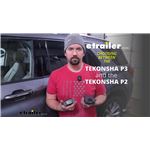
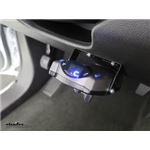

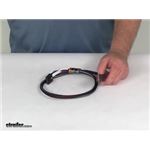
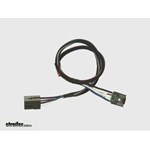


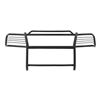
























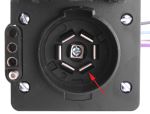
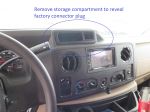



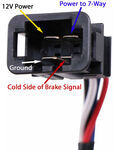







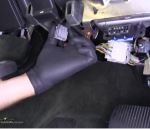




Thank you! Your comment has been submitted successfully. You should be able to view your question/comment here within a few days.
Error submitting comment. Please try again momentarily.